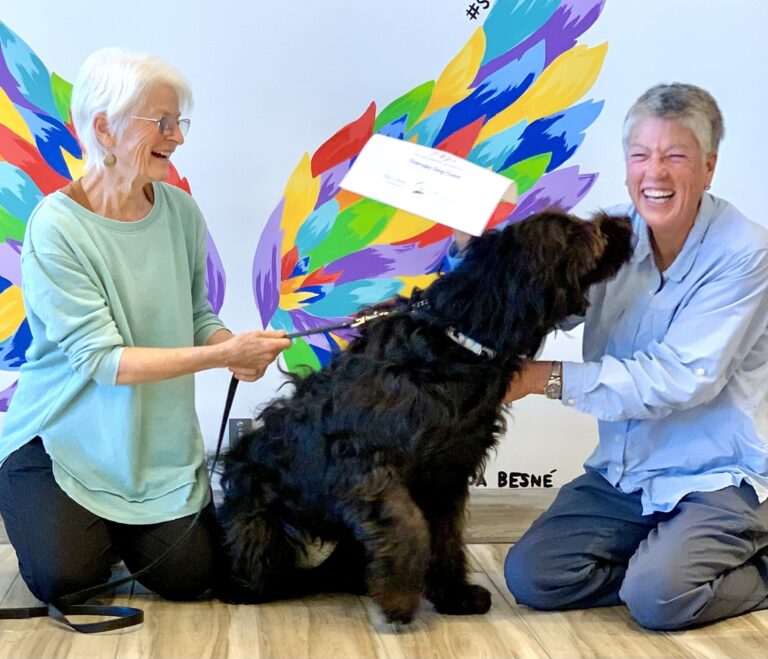Kate Abbott
Director of KSCEC, Trainer
Meet Kate
Early Days
My childhood dog and I found a way to entertain people--we lived on a military base and a guard would salute as permission to drive through the base entrance. When I was nine, I taught my Pekingese to sit up and return the guard’s salute. The moment of fun for both my dog and the bored guard made me happy. Of course I wanted to share that feeling with others! So, the next “show and tell” at school, I took my dog and demonstrated each step of teaching him to salute (including, of course, handouts for my classmates).
Over the years
I have owned a wide range of dogs: Toy Poodle to Mastiff, Pekingese to Rottweilers, with plenty of mutts as well. Each one has shown me just how wonderful and varied dogs can be. Each one has taught me that there are many ways to train.

Skills and Experience

- Veterinary technician (8 years)
- Protection and security dog training (5 years)
- Therapy dog handler (12 years)
- Service dog trainer (8 years)
- Behavior consultant (10 years)
- Group obedience classes (17 years)
- Private training sessions (15 years)
- Lectures and demonstrations on obedience and trick training, therapy dogs, and first aid
- Board President of Love on a Leash therapy dogs (10 years)
- Co-author of How to train Your Dog: A Relationship-Based Approach for a Well-Behaved Dog, published 2022
My Training Style
In my group classes, I start with the framework of what skills and commands are needed for most dogs to successfully live with humans. I teach each of those in two ways to let owners find which works best for them and their dog: “lure and reward” and “choosing games. Then, we modify the teaching, as needed, for individuals—both human and canine. For me, it comes down to what skills are the most effective—for the dog and the owner that are right in front of me.
Training should be accessible, effective, and fun.
It’s not just about training your dog—it’s learning how to communicate and bond with your dog

Goals

Many years ago I read a study that said that 96% of dogs given up to shelters had not received any obedience training. I was sad and stunned.
Around the same time, I was at a national dog trainer’s conference that had erupted into a battle over which method of training is the best. The guy sitting next to me leaned over and remarked, “The only thing all these trainers can agree on is that everyone else is doing it wrong”.
One of my life goals is to create a learning center for dog training so that:
- trainers of different skill sets can offer classes
- dog owners can learn different dog related activities such as nosework, obedience, rally, and so much more!
- trainers can learn from each other and share a variety of techniques
Our Mission
As a 501c3 nonprofit organization, our mission is to keep dogs in their homes and out of shelters by educating and supporting their humans. We also provide aid and training to enable owners to train their own dogs, if suitable, as their service dog.

Supporting Dog Owners
A 2013 study by the American Humane Association found that one in ten pets adopted from a shelter were no longer in the home six months later. The study said the issues surrounding returning a rescue dog are complicated and that "given the complexity of the situation and relationships, it may be unlikely that there is one 'silver bullet' intervention that is likely to markedly increase retention." But the study did find that people who asked for help before returning the pet were more likely to keep the pet than those who had not sought advice.

Testimonials
Kate is the most wonderful trainer. I’ve known her for over 25 years. She’s a true dog whisperer in my opinion. She truly understands dogs and how they see the world.
Kate is a great trainer; she uses positive methods and encourages both the owners and the dogs whilst making clear what is needed for the dog to improve. I highly recommend Kate as a trainer!







